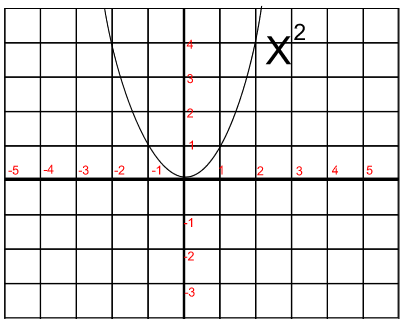(y
= a(x - h)2 + k)
|
 |
(y = a(x - h)2 + k) Above is the general formula for a parabola. Depending on the value of "a", "h" and "k" the parabola is dilated, translated and reflected along the x and y axis. If the value of: - "a" is greater than 1 and positive the parabola becomes thinner. If the value of "a" is negative the parabola is inverted. - "h" moves the parabola along the x axis "h" units left or right. If the value of "h' is positive the parabola moves "h" units to the left. If the value of "h' is negative the parabola moves "h" units to the right. - "k" moves the parabola "k" units up or down the y axis. If the value of "k" is positive the parabola moves "k" units up. If the value of "k" is negative the parabola moves "k" units down.
Look at the animation above. |
For example. The turning point for the parabola given by the function y = 3(x - 4)2 + 3 is (4,3) The turning point for the parabola given by the function y = (x + 4)2 - 2 is (-4,-2) The turning point for the parabola given by the function y = 3(x - 4)2 is (4,0) The turning point for the parabola given by the function y = -3(x - 1)2 + 3 is (1,3) |